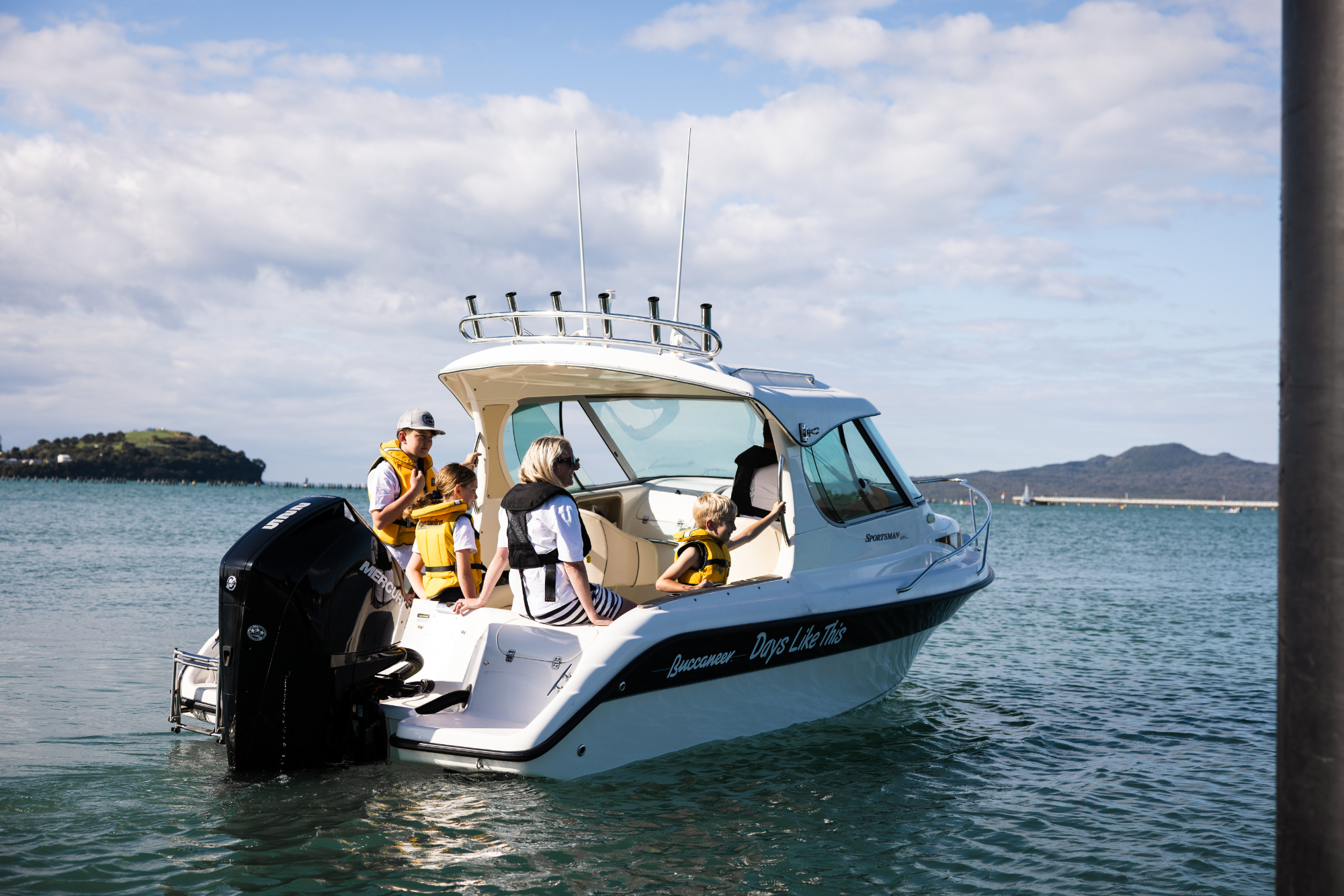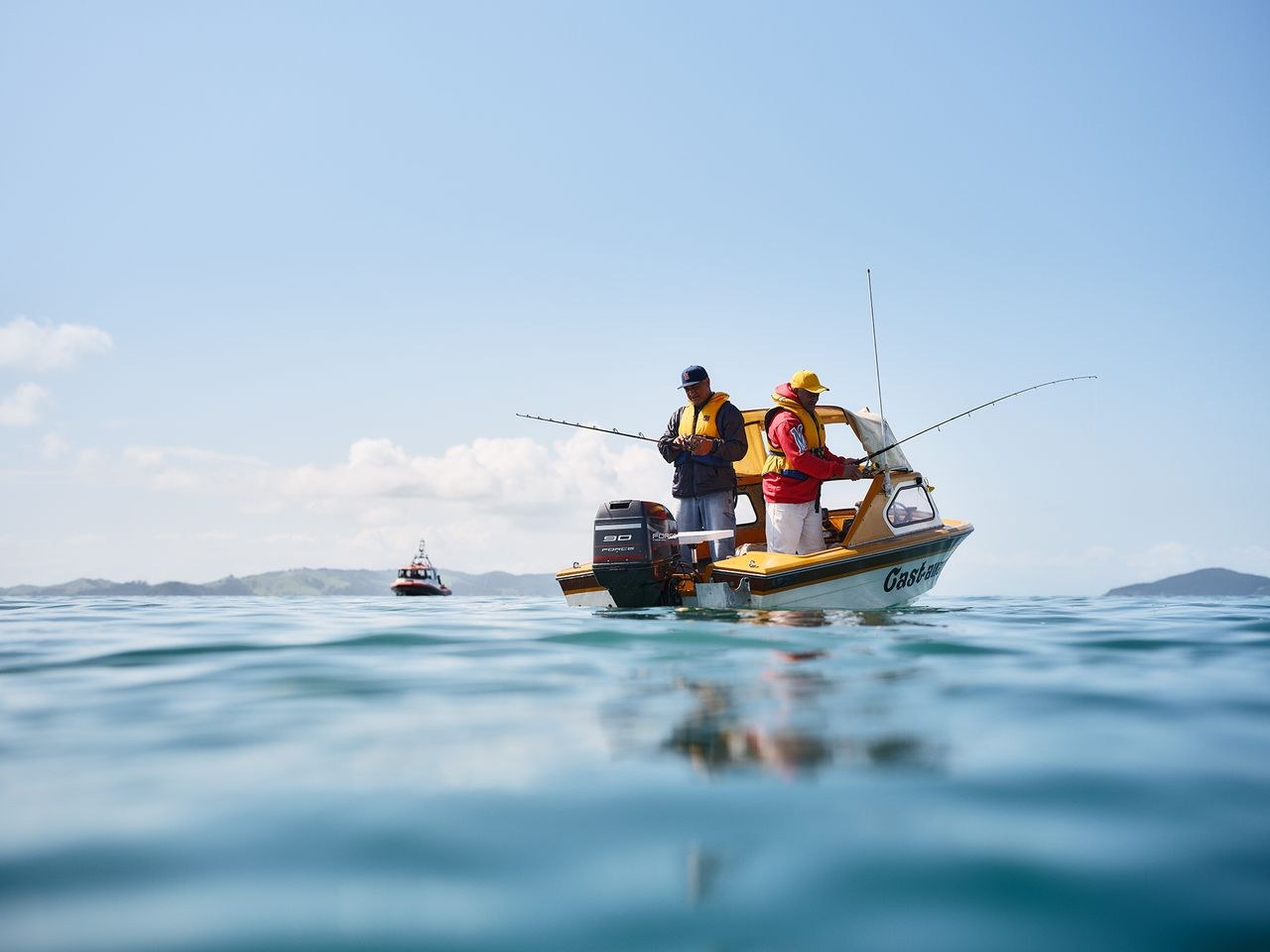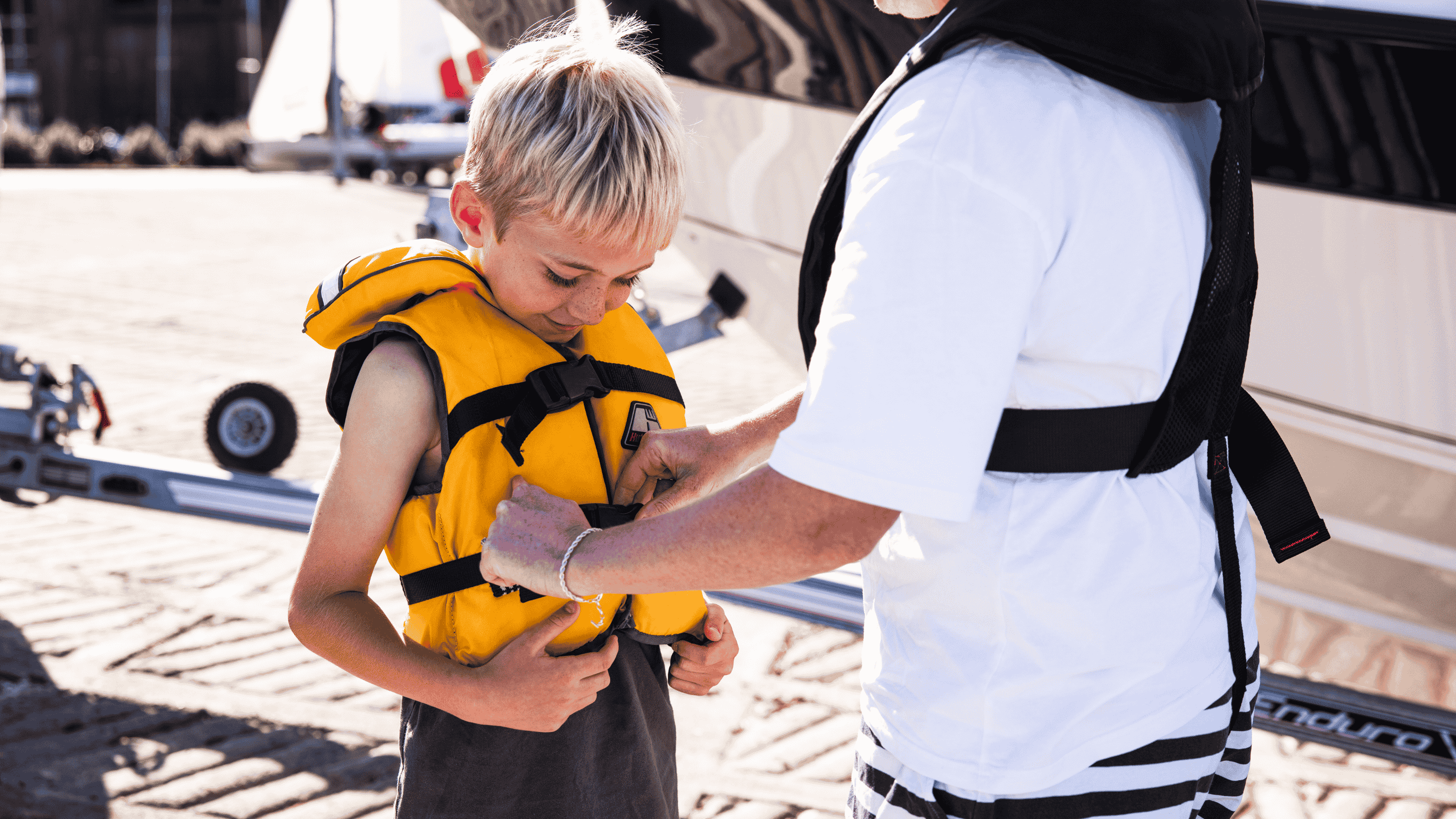New Zealanders love getting out on the water - but too many lives are still being lost simply because people aren’t wearing lifejackets. A new Bill is now open for public submissions, and it’s an important opportunity to create one clear national rule that will help keep everyone safe.
Public submissions are now open for the Life Jackets for Children and Young Persons Bill.
This proposed legislation aims to strengthen water safety rules and protect young lives on New Zealand’s waterways.
Closing date for submissions: 11.59 pm, Thursday 11 December 2025

"The facts are clear – lifejackets increase a person's survivability like nothing else. Our data and insights make it clear, up to 20 lives could be saved every year if everyone on a craft wore a lifejacket.
National legislation is a simple, sensible change that will save lives"
What's happening?
Submissions are now open on the Life Jackets for Children and Young Persons Bill.
The Bill proposes changes to Maritime Rules Part 91, which would require that recreational craft 6 metres or less cannot be used unless every person on board under 15 is wearing a lifejacket.
It’s a positive start - but on its own, it won’t significantly reduce the number of people losing their lives on the water. The data is clear: adults, particularly men over 40, are most at risk. To truly make a difference, the law needs to go further.
📅 Submissions close: 11.59pm, Thursday 11 December 2025

Many people are surprised to learn New Zealand does not have a single national lifejacket law. Instead, each region has its own bylaws. The result? Confusion - and preventable fatalities.
A simple, consistent national rule would make it easier for everyone to understand what’s required, no matter where they go boating.
Coastguard’s position
Coastguard volunteers see first-hand the heartbreak that comes when someone isn’t wearing a lifejacket. We welcome the intent of the Bill, but believe it doesn’t go far enough.
Our primary recommendation
✔️ Mandatory lifejacket use for passengers on all recreational craft, regardless of size, whenever the vessel is underway.
Alternate position
If a full extension isn’t considered, we recommend:
- Mandatory lifejackets for all children under 15 on all recreational craft whenever the vessel is underway; and
- Mandatory lifejackets for all passengers on vessels 6 metres and under whenever the vessel is underway.
A law that applies across all craft and all ages will save more lives and remove confusion.
While we encourage you to align your submission with this position, we understand your views are your own.

We believe a single, consistent national rule for lifejackets will help New Zealanders make the right decisions when out on the water.
A lifejacket law will save lives. Easy to follow laws, supported by community awareness, creates meaningful change.
The facts that support the change
- 2025: 10 people have drowned on craft without lifejackets (to date).
- 2024: 20 craft-related drownings - 18 weren’t wearing lifejackets.
- If everyone wore a lifejacket, up to 20 lives could be saved every year.
- Most fatalities involve men over 40.
- Smaller craft capsize more easily, increasing risk.
- Wearing a lifejacket dramatically increases survival by keeping a person afloat and visible long enough for rescue.
- Legislation works:
- Pool fencing laws cut child drownings by almost 80%.
- After mandatory lifejacket laws:
- Tasmania: fatalities dropped from 45 to 19 (before/after legislation)
- Victoria: lifejacket wearing rates rose from 22% to 63%
- Waikato: 90% compliance eight years after local bylaw (Maritime NZ)

This is your chance to help create a safer future on the water for all New Zealanders.
Anyone can have their say. You don’t need to be an expert - just share why you believe stronger lifejacket laws will save lives.
Tell your friends, whānau, or community groups. Most New Zealanders don’t realise there is no one-clear national lifejacket law. Together, we can change that.
Got questions regarding the Bill?
-
Why does the Bill only cover children under 15?
Children are more vulnerable in cold water and often have limited swimming ability, so the Bill aims to protect them first. But the statistics show a different picture: adults - particularly men over 40 - make up most watercraft fatalities. To genuinely reduce drownings, Coastguard believes mandatory lifejacket use needs to extend beyond children to everyone on every recreational craft.
-
What about larger vessels over 6 metres?
Bigger boats are generally more stable, but they’re not risk-free. While smaller craft make up most historical incidents, more recent data shows drownings also happen on vessels over 6 metres. Coastguard’s view is that lifejackets should be mandatory for all persons on all recreational craft, regardless of size.
-
Do lifejackets really help? People have drowned while wearing them.
Yes! Craft users are three times more likely to survive if wearing a lifejacket. Fatalities where lifejackets were worn often involve other factors (e.g., fast-flowing rivers, incorrect fit, failure to secure straps, medical events or inflatable jackets not activated). Properly fitted lifejackets dramatically improve survival chances.
-
Why include the vessel being “underway”?
Neither the current Maritime Rule Part 91 nor the proposed Bill clearly defines lifejacket use in relation to a vessel being underway. This is an important gap. Coastguard recommends that mandatory lifejacket use should apply whenever a recreational craft is underway, ensuring people are protected in the most common risk scenarios - while the vessel is moving.
-
What about when the vessel is stationary?
For practicality, Coastguard recommends allowing skipper discretion to remove lifejackets in clearly safe circumstances, such as when a vessel is anchored, moored, or passengers are sleeping. This provides clarity and national consistency while still recognising the realities of boating and the need for reasonable flexibility.
-
Why not include rock fishers in proposed amends?
We agree rock fishers face significant risk and should wear lifejackets. However, they are not on craft, so they fall outside the scope of Maritime Rules Part 91. A separate legislative approach is needed for land-based fishing safety.
-
What is a recreational craft?
A recreational craft is any vessel used for leisure rather than commercial purposes. This includes small and large boats, dinghies, and manually powered craft.
Examples: powerboats, yachts, dinghies, kayaks, canoes, tenders, paddleboards.
The term “recreational” refers to how the craft is used, not just its size. While some safety rules differentiate based on length (e.g., stricter requirements for vessels 6 m and under), our position is that mandatory lifejacket use should apply to all recreational craft, regardless of size.
-
How will this be enforced?
Enforcement will be determined by Maritime New Zealand. We recommend practical measures such as checks at boat ramps and infringement fee waivers if proof of lifejacket purchase is provided. Education and grace periods will help with the transition.
-
What is the current version of Maritime Rule Part 91?
Maritime Rule Part 91 sets the basic safety rules for recreational boating in New Zealand. At present, the rule requires carriage of personal flotation devices (PFDs) - meaning you must have a lifejacket on board for each person, but not necessarily be wearing one. This applies to most recreational craft, including pleasure craft and manually powered craft used in commercial operations such as sea kayak rentals.
Lifejackets must currently be worn only in situations of heightened risk, such as rough conditions, poor visibility, or when instructed by the skipper. Some craft are exempt from carrying lifejackets altogether, such as sailboards when the sailor is wearing a wetsuit, and people training or competing in certain sporting events where a support vessel is present.
The rule also sets standards for the types of lifejackets allowed, including specialised devices used for paddle craft.
While requiring lifejackets to be carried is important, it doesn’t prevent drownings when incidents happen suddenly - and they often do. Many fatalities occur close to shore, in calm conditions, or on “quick trips” where people assumed they didn’t need to put a lifejacket on. Moving from carriage to mandatory wearing ensures people already have a lifejacket on in the moments that matter most. International evidence shows this simple shift saves lives, which is why Coastguard supports extending mandatory lifejacket use to everyone on all recreational craft.
-
What about the current exclusions and exceptions to wearing a lifejacket in Part 91 and the various bylaws around the country?
There are practical reasons users such as surfers, windsurfers, divers on small dive boats and some adventure sports are not required to wear a lifejacket, e.g., when a wetsuit is worn. We are not suggesting these be removed.